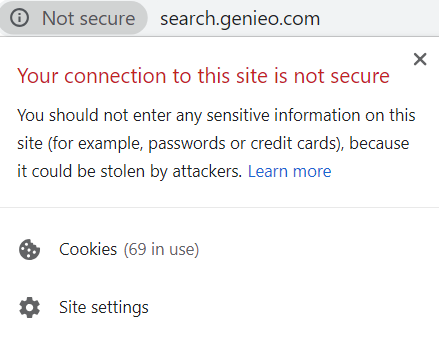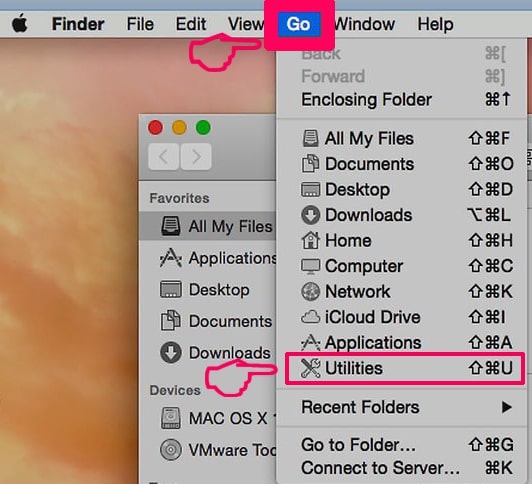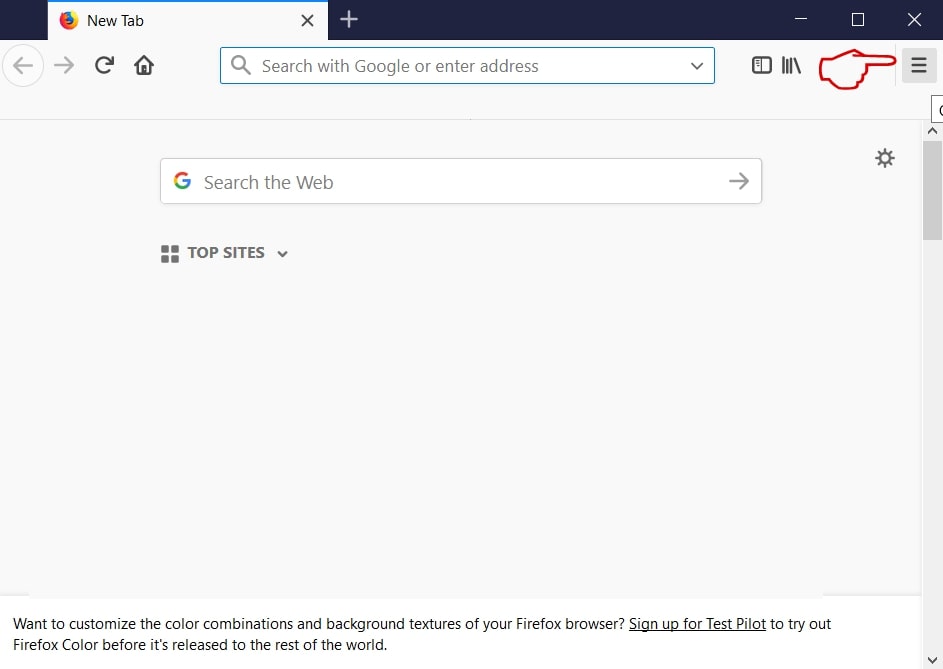What Is Genieo?
Genieo is one of those browser hijackers, which initially begun as adware for Windows, setting the search.genieo.com as a default search engine and displaying multiple ads on Windows computers. And it appears that now Genieo continues it’s saga of pushing unwanted software on Mac’s as well.
Read this article to understand how to remove this malware from your Mac and how to stop such programs in the future.

Genieo Summary
| Name | Genieo also known as Adware.MacOS.Genieo.VD, Adware.MacOS.Genieo.BY, Adware.MacOS.Genieo.BV – See the full list on VirusTotal. |
| Type | Browser Hijacker/Adware for Mac OS |
| Short Description | Aims to hijack the web browsers of the compromised Mac’s to show third-party content. |
| Symptoms | Different types of advertisements may start appearing. Your browsers’ settings might be changed to show redirects. |
| Distribution Method | Via bundling or by you installing it from a website. |
| Detection Tool |
See If Your System Has Been Affected by malware
Download
Combo Cleaner
|
User Experience | Join Our Forum to Discuss Genieo. |
Genieo PUP – How Did I Get It
According to their site, where the software could be added to the victim’s Mac, Genieo claims that they offer a custom home page, that is interactive and features that latest news, according to ti’s users’ interests. However, the truth is significantly different than what is advertised, since this hijacker may change the home page and the new tab page of your web browsers to search.genieo.com to push it’s third-party content, that may not always lead you to safe sites.

Another method by which Genieo may be spread is to be included in the installers of other third-party programs. The software may be offered in one of the installation steps, usually located in the “Custom” or “Advanced” installation tabs. This may ultimately result in Genieo to be even added by installing something in it’s Express installation mode and skipping the Advanced installation steps.
Genieo Malware – What Does It Do?
When we checked the cookies on the default search engine set by this malware on your web browser, we have established that the amount of tracking tech used is unusually high and some of the cookies may stay on your browser for years, because of their expiration date being set to several years after you install Genieo.

Not only this, but the search engine itself is not HTTPS secured, which is highly untypical for a search engine and is characteristic to hoax search pages:

More to it, the Privacy Policy on the search engine itself claims that there might be situations in which they may collect certain type of information directly from your Mac.
Is Genieo a Virus?
Genieo is often described as a virus, but more accurately it is a form of malware known as a potentially unwanted program (PUP) or adware. It’s typically bundled with other software and gets installed on your Mac without your explicit consent.
While it doesn’t directly harm your computer like a traditional virus might, it can be quite intrusive and difficult to fully remove. This behavior is why it is considered malicious and categorized as malware. It’s recommended to use a trusted antivirus or anti-malware software to remove Genieo from your system.
Is It Dangerous?
Usually unwanted programs, like Genieo often engage in partnerships with third-party sites with whom they cooperate to show a lot of advertisements, based on the information that is collected by the user, via the cookies set by the search engine. But this is a knife with two blades, since these redirects and ads may pose different risks:
- Genieo may lead the vicitm to sites that may download malware, disguised as an app or an update.
- Users may be convinced to fill out their personal data in fake survey or login web pages, which is also known as phishing attack.
- The victims might be tricked into believing fake web pages that claim their Mac is at risk and call scammers’ phone numbers who pretend to be tech support.
- The victims may input malicious code that might cause severe slowdowns on their computers and even crashes on their computers.
In addition to this, the same people who likely made Genieo are the same people who want to push third-party sites for profits without morally deciding which sites to push, thus making the app more risky for the average user.
How to Remove Genieo from Your Mac
If you feel unsafe using Genieo and you have decided to remove this unwanted program from your browser and your Mac, we recommend that you read this article as it will help you to fully remove this hijacker either manually or automatically. If manual removal does not seem to work. It is highly advisable to download an advanced anti-malware software, which is created to ensure that all traces of this malware are removed and also make sure that you are as protected as possible against future invasive apps just like it.
Steps to Prepare Before Removal:
Before starting to follow the steps below, be advised that you should first do the following preparations:
- Backup your files in case the worst happens.
- Make sure to have a device with these instructions on standy.
- Arm yourself with patience.
- 1. Scan for Mac Malware
- 2. Uninstall Risky Apps
- 3. Clean Your Browsers
Step 1: Scan for and remove Genieo files from your Mac
When you are facing problems on your Mac as a result of unwanted scripts and programs such as Genieo, the recommended way of eliminating the threat is by using an anti-malware program. SpyHunter for Mac offers advanced security features along with other modules that will improve your Mac’s security and protect it in the future.

Quick and Easy Mac Malware Video Removal Guide
Bonus Step: How to Make Your Mac Run Faster?
Mac machines maintain probably the fastest operating system out there. Still, Macs do become slow and sluggish sometimes. The video guide below examines all of the possible problems that may lead to your Mac being slower than usual as well as all of the steps that can help you to speed up your Mac.
Step 2: Uninstall Genieo and remove related files and objects
1. Hit the ⇧+⌘+U keys to open Utilities. Another way is to click on “Go” and then click “Utilities”, like the image below shows:

2. Find Activity Monitor and double-click it:

3. In the Activity Monitor look for any suspicious processes, belonging or related to Genieo:


4. Click on the "Go" button again, but this time select Applications. Another way is with the ⇧+⌘+A buttons.
5. In the Applications menu, look for any suspicious app or an app with a name, similar or identical to Genieo. If you find it, right-click on the app and select “Move to Trash”.

6. Select Accounts, after which click on the Login Items preference. Your Mac will then show you a list of items that start automatically when you log in. Look for any suspicious apps identical or similar to Genieo. Check the app you want to stop from running automatically and then select on the Minus (“-“) icon to hide it.
7. Remove any leftover files that might be related to this threat manually by following the sub-steps below:
- Go to Finder.
- In the search bar type the name of the app that you want to remove.
- Above the search bar change the two drop down menus to “System Files” and “Are Included” so that you can see all of the files associated with the application you want to remove. Bear in mind that some of the files may not be related to the app so be very careful which files you delete.
- If all of the files are related, hold the ⌘+A buttons to select them and then drive them to “Trash”.
In case you cannot remove Genieo via Step 1 above:
In case you cannot find the virus files and objects in your Applications or other places we have shown above, you can manually look for them in the Libraries of your Mac. But before doing this, please read the disclaimer below:
1. Click on "Go" and Then "Go to Folder" as shown underneath:

2. Type in "/Library/LauchAgents/" and click Ok:

3. Delete all of the virus files that have similar or the same name as Genieo. If you believe there is no such file, do not delete anything.

You can repeat the same procedure with the following other Library directories:
→ ~/Library/LaunchAgents
/Library/LaunchDaemons
Tip: ~ is there on purpose, because it leads to more LaunchAgents.
Step 3: Remove Genieo – related extensions from Safari / Chrome / Firefox









Genieo-FAQ
What is Genieo on your Mac?
The Genieo threat is probably a potentially unwanted app. There is also a chance it could be related to Mac malware. If so, such apps tend to slow your Mac down significantly and display advertisements. They could also use cookies and other trackers to obtain browsing information from the installed web browsers on your Mac.
Can Macs Get Viruses?
Yes. As much as any other device, Apple computers do get malware. Apple devices may not be a frequent target by malware authors, but rest assured that almost all of the Apple devices can become infected with a threat.
What Types of Mac Threats Are There?
According to most malware researchers and cyber-security experts, the types of threats that can currently infect your Mac can be rogue antivirus programs, adware or hijackers (PUPs), Trojan horses, ransomware and crypto-miner malware.
What To Do If I Have a Mac Virus, Like Genieo?
Do not panic! You can easily get rid of most Mac threats by firstly isolating them and then removing them. One recommended way to do that is by using a reputable malware removal software that can take care of the removal automatically for you.
There are many Mac anti-malware apps out there that you can choose from. SpyHunter for Mac is one of the reccomended Mac anti-malware apps, that can scan for free and detect any viruses. This saves time for manual removal that you would otherwise have to do.
How to Secure My Data from Genieo?
With few simple actions. First and foremost, it is imperative that you follow these steps:
Step 1: Find a safe computer and connect it to another network, not the one that your Mac was infected in.
Step 2: Change all of your passwords, starting from your e-mail passwords.
Step 3: Enable two-factor authentication for protection of your important accounts.
Step 4: Call your bank to change your credit card details (secret code, etc.) if you have saved your credit card for online shopping or have done online activiites with your card.
Step 5: Make sure to call your ISP (Internet provider or carrier) and ask them to change your IP address.
Step 6: Change your Wi-Fi password.
Step 7: (Optional): Make sure to scan all of the devices connected to your network for viruses and repeat these steps for them if they are affected.
Step 8: Install anti-malware software with real-time protection on every device you have.
Step 9: Try not to download software from sites you know nothing about and stay away from low-reputation websites in general.
If you follow these reccomendations, your network and Apple devices will become significantly more safe against any threats or information invasive software and be virus free and protected in the future too.
More tips you can find on our MacOS Virus section, where you can also ask any questions and comment about your Mac problems.
About the Genieo Research
The content we publish on SensorsTechForum.com, this Genieo how-to removal guide included, is the outcome of extensive research, hard work and our team’s devotion to help you remove the specific macOS issue.
How did we conduct the research on Genieo?
Please note that our research is based on an independent investigation. We are in contact with independent security researchers, thanks to which we receive daily updates on the latest malware definitions, including the various types of Mac threats, especially adware and potentially unwanted apps (PUAs).
Furthermore, the research behind the Genieo threat is backed with VirusTotal.
To better understand the threat posed by Mac malware, please refer to the following articles which provide knowledgeable details.


